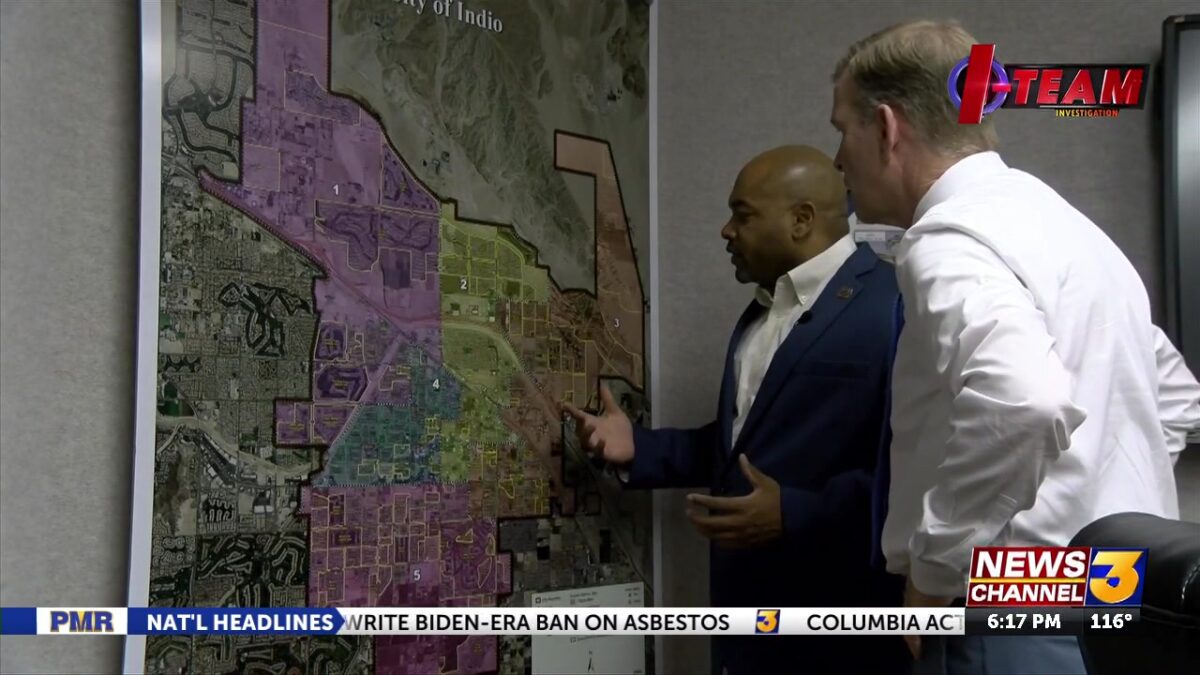Homeless initiatives well underway in the Coachella Valley with some promising results and long-term concerns

Jeff Stahl
The number of homeless people in Riverside County and throughout California continues to rise.
In an I-Team investigation on homelessness, we are revealing new ways local communities are combating the problem for those on the streets and everyone who witnesses this loss of human dignity in our local cities.
California has spent at least $24 billion on homeless initiatives since 2019, only to see numbers swell to 187,000, which is nearly a quarter of the nation’s entire homeless population.
Governor Gavin Newsom said in May, “It’s time to take back the streets. It’s time to take back the sidewalks.”
He called on California cities to clear their homeless encampments, parks, and streets throughout the state.
Holding officials accountable, Jeff Stahl sat down with Desert Hot Springs Police Chief Steven Shaw to ask if the city is doing all it can to clear homeless encampments, as the Governor has called for. Shaw said, “We’ve been doing our part before the governor even put that edict out there.”
January’s latest Point In Time Homeless Count revealed that many Coachella Valley communities are already experiencing positive trends. Overall, homeless numbers were up in Cathedral City, Coachella, Indio, and La Quinta. They were down, however, in Desert Hot Springs, Palm Desert, Palm Springs, Rancho Mirage, and unincorporated areas of the county.
Shaw says a final solution to the problem of homelessness remains elusive.
Desert Hot Springs has spent considerable resources to open the HUB Crisis Stabilization Housing Units, capable of housing up to 26 people in five units for up to 90 days. But it hasn’t been cheap.
Take a look:
The number of unsheltered homeless individuals dropped to 81 this year in Desert Hot Springs, down from 107 in 2023. Sheltered more than doubled– from just 15 in 2023– to 35 this year.
Asked if he can ever get rid of it? Shaw said, “It’s never going to be completely gone at all. I think, unfortunately, every community is going to have some sort of homeless problem going forward.”
Shaw’s sentiments are echoed by other local leaders.
Indio City Councilmember and Coachella Valley Association of Governments Homelessness Committee Member Waymond Fermon said, “Have we gotten everyone off the streets. No, and I don’t think that’s possible, but the services are there so when those folks are willing and able to accept, we do have the services.”
Indio’s Point In Time numbers mirror Riverside County’s. There are more homeless people this year at 509 in Indio. But there are also fewer unsheltered now, 108 in 2023, down to 51 currently. 458 are sheltered this year. 319 were sheltered in the 2023 count.
2023 unsheltered– 108– sheltered 319— total 427
2025 unsheltered– 51– sheltered 458– total 509
“Has the city done enough in your mind to get people off the streets,” Fermon asked? “I appreciate the Governor’s compassionate assertiveness with this,” Fermon said, adding, “None-the-less, the City of Indio– We passed a model ordinance on this last year.”
Where are they now? Fermon says along the Whitewater Wash, along Highway 111 downtown, and city parks including North Jackson, Miles, and Carreon.
“We have some open areas we have some challenges with,” Fermon said, detailing the freeway and railroad, which transport homeless people in and out of the city every day. There are also tribal and railroad lands, he says, that create jurisdictional issues within the city.
In Palm Springs, there are fewer homeless people in parks, streets, and elsewhere, according to the latest Point In Time Count.
Mayor Ron deHarte said, “Part of the reason why you’re not seeing so many people on the streets at night, is we have beds.”
Mayor deHarte says you can see it on the streets, with some people living homeless outside, but more people are sheltered.
unsheltered 239 sheltered 29 total 268 in 2023
unsheltered 88 sheltered 74 total 162 in 2025
The challenge now is the same as it is in other local cities.
“We don’t allow domesticated animals to live like we allow some of our fellow Americans to live,” said Mills in Palm Springs, adding, “That’s got to stop.”
It took a $40 million investment to open the Navigation Center to get more people off the city’s streets.
Affordable housing, such as the 71 new units opening this summer at the Aloe Apartments, another $40 million project, is part of the solution.
But leaders say enforcement and stronger measures are required for those who are not ready or willing to get off the street— many with drug and alcohol addictions– and mental illness.
deHarte said, “When somebody wants help, they’re getting help in Palm Springs. Our challenge comes when someone’s not there yet.”
Mills said, “We need a regional secured facility where we can take people who have reached the level of they cannot handle their own lives.”
The Governor says California is woefully short on beds in mental health facilities. Police Chief David Mills says more beds are needed, but that doesn’t just mean spend, spend, spend.
“I think what you’re seeing is a homeless industrial complex where there are a lot of people making money off the backs of the homeless.”
Mills says spending on homelessness needs to be targeted and focused, and the results must be measured to avoid wasting money on initiatives that don’t work. He and others I spoke to say the effort to keep people off the streets will likely continue forever.